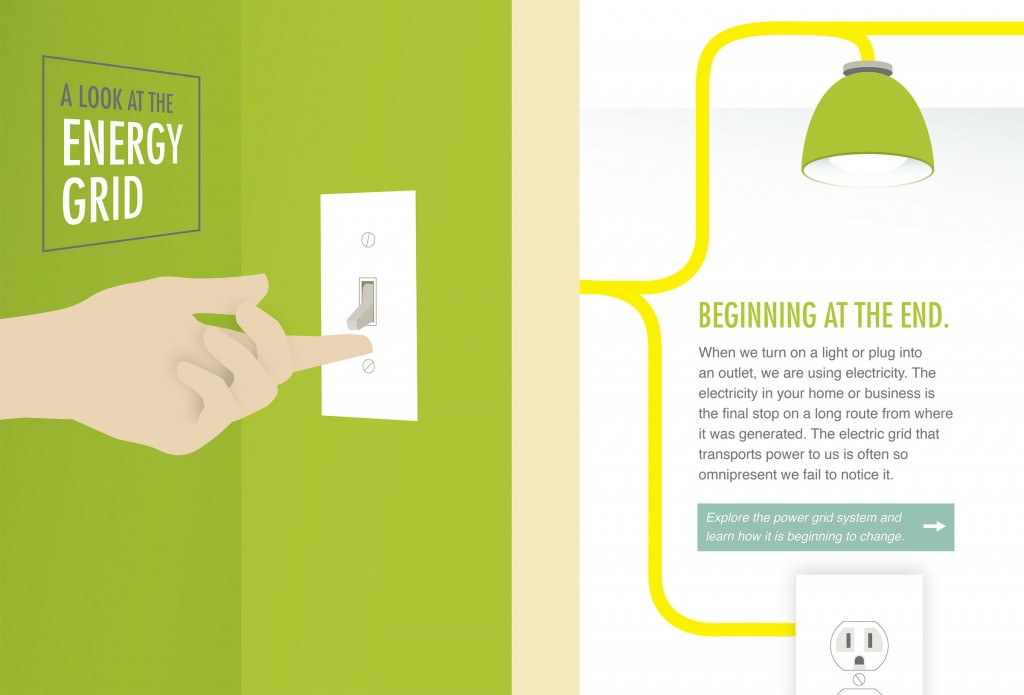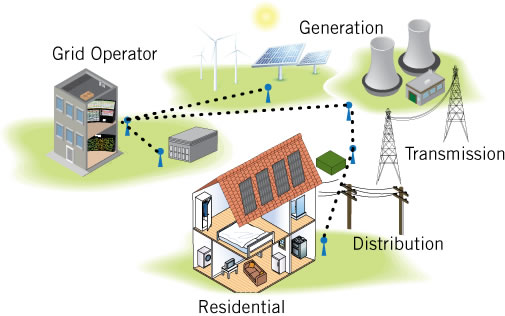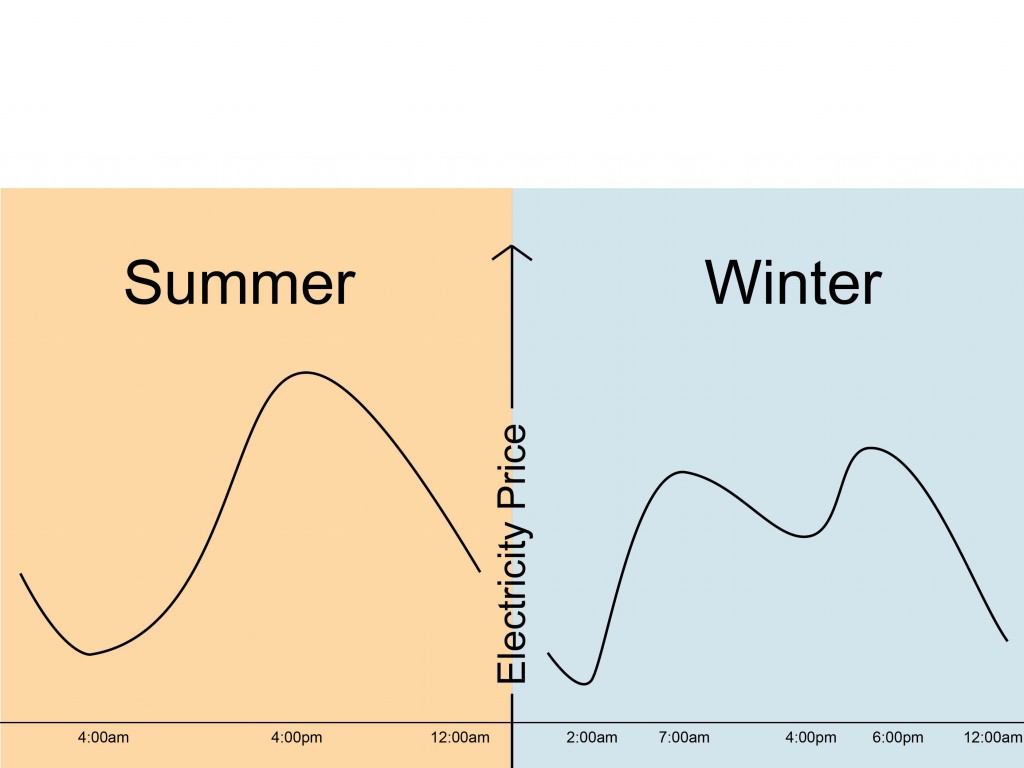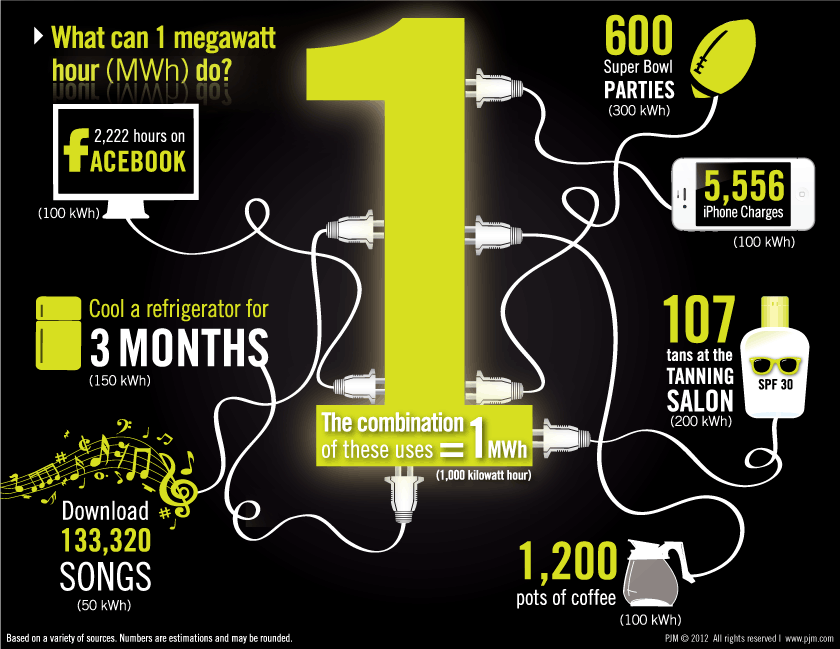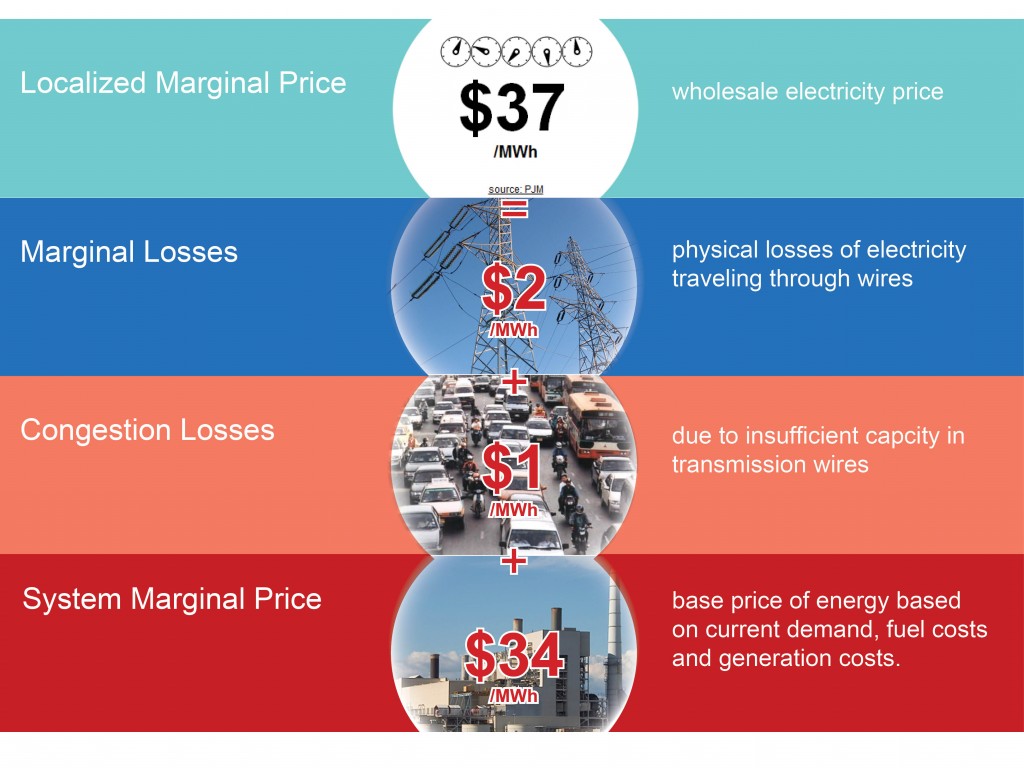A Primer on the Present and Future of Your Lighting Bill
Original Research by Alon Abramson, Project Manager at Penn Institute for Urban Research
The Electricity Grid
The electricity grid is the network of power stations, transmission lines, and transformers that delivers electricity from suppliers to consumers. PJM Interconnection is the regional electricity transmission organization that maintains the high voltage electricity transmission system for Pennsylvania and twelve other states as well as the District of Columbia and manages the delivery of electricity from large-scale generators. Local distributors, such as PECO in Philadelphia, get that electricity to consumers.
The Smart Grid
Electricity grid technology has remained relatively unchanged since the 1960s. Now, it is getting “smarter”: incorporating information technology that enables communication between electric utilities and consumers (allowing the utilities to better track service outages, for example).
Smart meters – currently being installed in regions nationwide, including Philadelphia – will provide two-way communication between utilities and consumers, thus allowing the tracking of real-time electricity usage.
These upgrades will also allow penetration of distributed renewable generation sources such as solar and wind into the grid without destabilizing it. Increasingly, users want to “roll back their meters” by supplying excess production from their own renewable sources into the grid (although the present electricity grid was designed to deliver electricity from power plants generators to users).
Variable Pricing: Supply and Demand
Currently, the retail price consumers pay for electricity is an average, fixed-rate price. However, the wholesale market price of electricity varies dramatically throughout the day and year, based on the amount of demand and on the source of supply. This wholesale price is a function of the cost of production as well as the added costs of transmission and distribution through the grid.
When the upgrade to a smart grid is complete, utilities will be able to charge consumers based on actual cost of production, transmission, and distribution throughout the day (Time of Use Pricing), instead of charging a fixed price regardless of time of day (Fixed Rate Pricing) as is done now, and to offer rebates for consumers cutting their energy use at peak usage periods (Demand Response).
Numerous power generators can contribute electricity to the grid simultaneously, with the cost of production differing dramatically depending on which power plant is supplying the electricty. The plants that provide the highest volume (measured in megawatts, see “Reading the Ticker,” below) and lowest-cost energy are usually located in rural areas.
The cost of producing electricity can also be influenced by location of demand in relation to supply. It is more expensive to deliver power longer distances due to energy losses in transmission lines. This means that cheaper-to-produce electricity delivered longer distances may ultimately cost more than more expensive-to-produce electricity generated nearby.
The cost of producing electricity also differs based on demand: when demand is higher, the wholesale price increases. As a general rule, people need more energy as the day progresses. Demand rises in the summer as well. In winter, demand varies more throughout the day and peaks in the evening, generally around the time people arrive home from work.
Educating Consumers and the Electricity Price Ticker
The cost of producing electricity varies constantly, but since consumers currently pay a fixed price for it they are generally unaware of that variability. With upgrades to a smart grid system, that will change: in the near future, retail consumers will have the option to buy power based on the actual market price. Once this happens, consumers will need to be educated about electricity pricing systems in order to make energy- and cost-saving decisions.
The development of the Electricity Price Ticker is one tool the EEB Hub is using to educate consumers. The Ticker, an online graphic that displays the real-time wholesale electricity price in the PECO region, demonstrates that the price of electricity changes throughout the day and year and is meant to help consumers make the connection between real-time wholesale price and retail electricity rates (in the same way that consumers connect the price of a barrel of oil to the price of gas at the pump). Once utilities begin offering new smart-meter-enabled billing options, which will give customers greater choices in their electricity billing, this knowledge will also empower consumers to make energy- and cost-efficient decisions when using electricity.
Reading the Ticker
Wholesale electricity is measured by the megawatt–hour (MWh). One megawatt-hour is equivalent to a thousand kilowatt-hours (KWh) or a million watt-hours (Wh), or the amount of energy one 60-watt light bulb would use if left on all day and night for 694 days. To give an idea of what this means, the average office space in climate zone 3, where Philadelphia is located, uses .017 MWh (or 17 KWh) per square foot per year [1].
The price you see on the ticker is the wholesale price, or locational marginal price (LMP) – a price that accounts for the cost of electricity production, transmission, and distribution – provided by PJM Interconnection for the PECO zone, which covers Philadelphia County. PJM Interconnection does not “set” this price, but tracks it within the PJM energy market. While the ticker only shows LMP for the PECO zone, PJM tracks LMP prices for hundreds of zones within its market.
The price of retail electricity – what residential and commercial customers pay for electricity use – is a forecasted average price. The specifics of how this price is set vary by state and municipality. Generally, utilities model the expected costs of production and operation and demand and set a fixed price that will ensure profitability and competitiveness.
How is Building Energy Efficiency Helping Reduce Electricity Cost
The commercial and residential sectors account for over 65% of net electricity consumption in the United States [1]. Increasing energy efficiency in the buildings sector will reduce demand and drive down costs, while simultaneously reducing demand for other energy sources, such as natural gas or oil for heating. In fact, a study by the Laurence Berkley National Lab estimated that energy efficiency has the potential to reduce residential and commercial electricity use by approximately 30% [2]. The Energy Efficient Buildings Hub and Department of Energy’s Building Technologies Program are just two institutions working towards increasing building energy efficiency.
Download the report.
References
[1] U.S. Energy Information Administration. (2011). Annual Energy Review 2011. Washington: Office of Communications, from http://www.eia.gov/totalenergy/data/annual/pdf/aer.pdf
[2] Ernest Orlando Lawrence Berkeley National Laboratory. (2008). U.S. Building-Sector Energy Efficiency Potential. Berkeley, CA: Brown, R., Borgeson, S., Koomey, J., & Biermayer, P., from http://enduse.lbl.gov/info/LBNL-1096E.pdf
